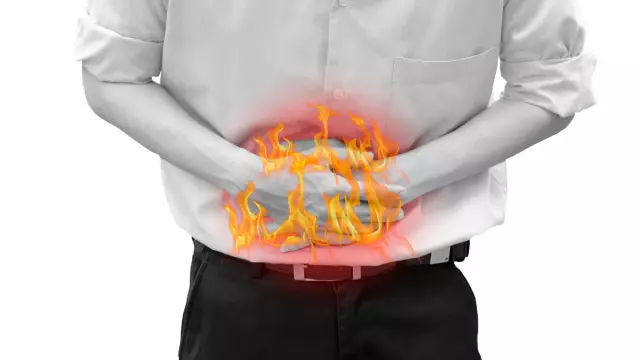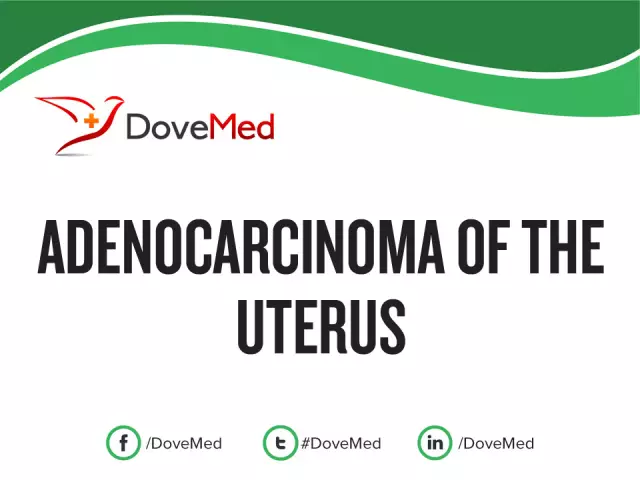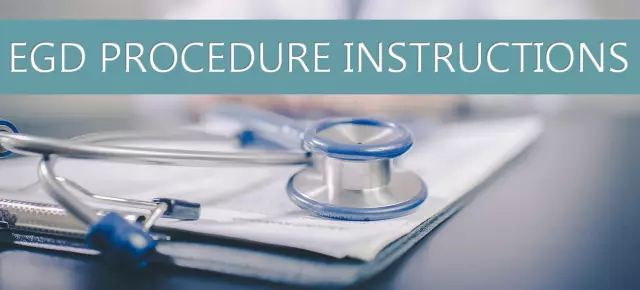- Author Rachel Wainwright [email protected].
- Public 2023-12-15 07:39.
- Last modified 2025-11-02 20:14.
Erosion of the stomach
General characteristics of the disease

Erosion of the stomach or erosive damage to the mucous membrane of an organ is one of the most common gastroduodenal diseases. It is a defect of the surface tissues of the stomach without involving the muscular layer of the organ in the process.
Erosion of the stomach in combination with a defect in the duodenal mucosa is diagnosed in 10-15% of patients who have undergone endoscopic examination of the gastrointestinal tract. The disease was first described by the Italian pathologist Giovanni Morgagni in 1756.
Causes of erosion of the stomach
The cause of erosion of the stomach is considered to be an imbalance between the protective and aggressive factors of the gastric environment. This imbalance is caused by:
- operations on the digestive tract,
- trauma,
- psychoemotional disorders,
- burns of the gastric mucosa due to abuse of hot or spicy food, alcohol, certain medications,
- systematic toxic effects of nicotine, heavy metal salts, alkalis, corrosive substances.
The formation of erosion of the stomach is often promoted by chronic diseases of organs and metabolism: for example, liver and heart failure, diabetes, pancreatitis, etc.
There is also a theory about the influence of the microorganism Helicobacter pylori on the state of the upper layers of stomach tissues. To date, this theory has not yet been proven, but it is reliably known that up to 90% of patients with gastric erosion are carriers of antibodies to Helicobacter pylori.
Types of stomach erosion
The most widespread was the systematization of the disease according to V. Vodolagin. According to her, several types of erosive defect of the gastric mucosa are distinguished:
- primary erosion of the stomach (i.e., an independent pathology of the organ),
- secondary erosion of the stomach (with lesions of the cardiovascular system, liver, etc.),
- malignant erosion of the stomach (with oncopathologies and Crohn's disease).
In addition, gastric erosion can be acute and chronic, single and multiple, as well as flat, polyvascular or hemorrhagic, i.e. bleeding.
The duration of the disease depends on the type of erosion of the stomach. Thanks to dynamic gastroscopic observation, it was possible to find out that acute erosion of the stomach heals on average within 10 days. In especially severe cases, the epithelialization of the gastric mucosa lasts 2-8 weeks. Acute erosions of the stomach are located, as a rule, in the proximal (central) parts of the organ.
Chronic erosion of the stomach is characterized by a longer existence, up to 5 years or more. It is localized mainly in the antrum (outlet) section of the stomach. Bleeding and their recurrence are more typical for combined erosion of the stomach and duodenum.
Stomach erosion symptoms
The clinical picture of gastric erosion is in many ways similar to the clinic of organ peptic ulcer disease. A specific symptom of gastric erosion is the intensity of the pain syndrome.
Unlike stomach ulcers, pain during erosion of the stomach is more pronounced and is characterized by a particular persistence of the course. In a number of patients, it is not possible to completely stop the pain even with the treatment of gastric erosion for 1-2 months.

Ulcerative symptoms of stomach erosion:
- night pain on an empty stomach,
- dyskinesia (disorder of the biliary system),
- dyspepsia (disorders of the digestive process).
The diagnostic criteria for gastric erosion are occult blood in the stool and anemia.
The type of gastric erosion is determined using endoscopic gastroduodenal examination and analysis of a biopsy of mucous tissues.
Stomach erosion treatment
Treatment of gastric erosion is long-term with regular endoscopic monitoring of the state of the mucous membrane.
The standard treatment for gastric erosion is antiulcer therapy with proton pump inhibitor drugs and H2 blockers. Antibiotics in the treatment of gastric erosion are used if the patient has been diagnosed with the microorganism Helicobacter pylori.
In the treatment of gastric erosion of the secondary form, cytoprotective drugs and prostaglandins of synthetic origin are used. Thanks to them, the healing time of the gastric mucosa is accelerated.
Microcirculation of blood in the tissues of the affected area of the mucosa significantly improves the effect of a low-intensity laser. Laser treatment of hemorrhagic type gastric erosion is carried out exclusively in a surgical hospital.
To prevent re-bleeding, blockers of H2-histamine receptors are used, for example, Kvamatel. In the treatment of chronic gastric erosions, gastroprotective drugs, for example, based on colloidal bismuth subcitrate, have proven themselves well.
Nutritional therapy for gastric erosion
An important part of the therapy of the disease is nutritional therapy for gastric erosion.
The main principle of the diet for gastric erosion is the maximum mechanical, thermal and chemical sparing of the mucous membrane of the organ. This means that in medical nutrition with gastric erosion, it is strictly prohibited:
- turnips, radishes, rutabagas, stringy meats, muesli, bran bread and other foods with coarse fiber and fiber,
- fried foods,
- alcohol,
- carbonated drinks,
- citrus juices,
- coffee,
- strong meat broth,
- cold and hot food.
Dairy products are mandatory elements of the diet for gastric erosion:
- milk,
- low-fat sour cream,
- butter,
- hard low-fat cheese.
It is believed that these products contribute to the production of enzymes that accelerate the regenerative processes in the gastric mucosa. And therefore, their active use in nutrition for gastric erosion is an important condition for the rapid healing of the mucous membrane.
The recommended diet for gastric erosion is 4-6 times a day in small portions. Diet dishes with stomach erosion are recommended to be boiled or steamed. Traditional diets for stomach erosion - steam cutlets, oatmeal, soft-boiled eggs, semolina, jelly, slimy soups.
Folk remedies for stomach erosion
Celandine is considered an effective folk remedy for erosion of the stomach. One tablespoon of the herb should be poured with 1 glass of boiling water and insisted in a thermos for 1.5 hours. The prepared infusion should be drunk within a month, 1 tablespoon 3 times a day 30 minutes before meals. After a ten-day break, it is recommended to repeat the monthly course of treatment of gastric erosion with celandine.
An effective folk remedy for stomach erosion is also an infusion of a mixture of St. John's wort, yarrow, celandine and chamomile flowers, taken in proportions of 2: 2: 1: 2. 20g of medicinal collection should be insisted for half an hour with a glass of boiling water, and then drink 100g 3 times a day half an hour before meals.

A folk remedy that successfully copes with gastric erosion is a collection of St. 5) and yarrow flowers (part 1). 20 g of dry mixture of this folk remedy for stomach erosion is poured with 200 g of boiling water and insisted in a thermos for 8-10 hours. You need to drink the prepared infusion 3-4 times a day, 200g one hour after eating.
A delicious folk remedy for stomach erosion - a teaspoon of honey every morning on an empty stomach. For severe pain, propolis is more effective.
All folk remedies for stomach erosion are recommended to be combined with traditional medications and a diet for stomach erosion.
YouTube video related to the article:
The information is generalized and provided for informational purposes only. At the first sign of illness, see your doctor. Self-medication is hazardous to health!






